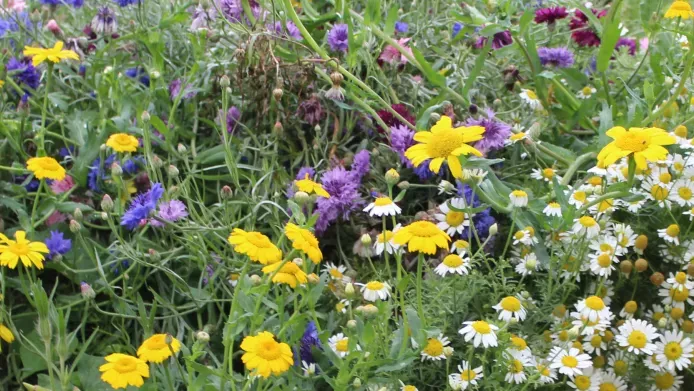Plants are intrinsic to many spiritual rituals and beliefs in British and Irish folklore. Discover the history behind popular Halloween traditions and the plants that inspired them.
Turnips
Carving a ‘jack-o’-lantern’ out of a pumpkin is a well-known Halloween practice nowadays, but follow this tradition back to its roots and we come upon the human-faced vegetables used to ward off spirits as part of the Celtic festival of Samhain.
Samhain dates back thousands of years and marks the night when the boundary between the worlds of the living and the dead is the thinnest. People carved scary faces into turnips and other root vegetables to frighten away evil spirits.
Celtic Samhain traditions later merged with Christian traditions (including the festival All Saint’s Day) to become Halloween. The tradition of carving vegetables took to America where pumpkins were easier to grow and became the new jack-o’-lanterns.
The ‘jack-o’-lantern’ is attributed to an Irish folktale from the 18th century about Stingy Jack. He supposedly tricked the devil, leading him to be barred from heaven and hell when he died. Stories say his soul aimlessley wandered a world between the two, with only an ember of coal in his turnip lantern to light the way.
 Wild turnip
Wild turnip
Wild Turnip (Brassica rapa ssp. campestris), is the wild relative of the cultivated turnip (Brassica rapa). Found by streams and rivers, this plant is an archaeophyte, which means it was introduced to the UK pre 1500AD.
Kale
Kale is one of the hardiest and easiest crops to grow in Scotland, making it the centrepiece of many Scottish games and traditions. In his 1785 poem ‘Halloween’, Scottish bard Robert Burns describes people pulling kale stalks from the ground blindfolded after dark. The length, shape and soil around the stalk’s roots was said to predict the wealth and characteristics of a person’s future partner.
“Then, first an' foremost, thro' the kail,
Their stocks maun a' be sought ance;
They steek their een, and grape an' wale
For muckle anes, an' straught anes.”
- Robert Burns, 'Halloween', 1785
 Brassica oleracea © RBG Kew
Brassica oleracea © RBG Kew
Wild cabbage (Brassica oleracea) is native to the UK, commonly found near sea cliffs. Crop plants realted to this species include kale (Brassica viridis).
Apples
Apple bobbing likely dates back to Celtic festivals in Scotland.
Bobbing for apples is a game still played at parties in the UK. It involves putting apples in a bucket of water for people to fetch out with their mouths, with their hands behind their backs.
It’s thought this game originates from a courting ritual, where women would mark apples to represent potential romantic partners. Players would then ‘bob’ for the apple/person she was interested in.
Some think the tradition could be related to ducking, a form of ‘witch testing’ where women were dunked underwater. If the woman died, she was considered not a witch, however if she survived it was often considered evidence of witchy abilities.
 Crab apple
Crab apple
Crab apple (Malis sylvestris) is the UK native wild relative to species of apple crops (Malus domestica).
Nuts
“Some merry, friendly, countra-folks
Together did convene,
To burn their nits, an' pou their stocks,
An' haud their Halloween
Fu' blythe that night.”
– Robert Burns, Halloween 1785
In some Scottish and northern English communities, October 31st celebrations became known as “Nut Crack Night” by people trusting in the magical properties of nuts and using them in early divination games. In one popular game, couples put nuts in the fire. If the nuts burnt steadily together, the union was predicted to be a happy one; if they popped and jumped, the lover was not deemed trustworthy. The same test is thought to have been used to test the fidelity of a partner.
 Corylus avellana © RBG Kew
Corylus avellana © RBG Kew
Native UK tree nut species include hazel (Corylus avellana), from which we get hazelnuts (also called cobnuts).
Other popular nuts in the UK include walnut (Juglans regia) and sweet chestnut (Castanea sativa). Both species were introduced pre- 1500AD.
More from the blog


